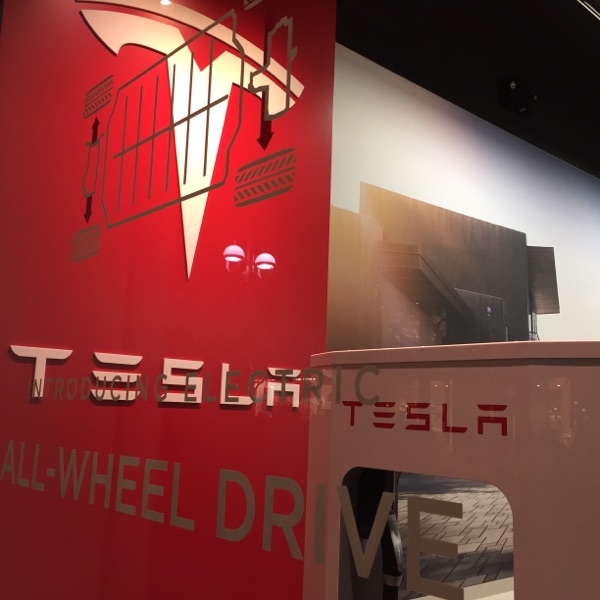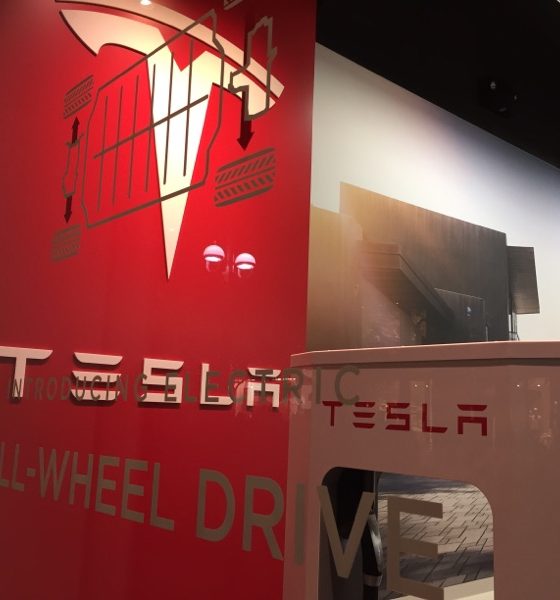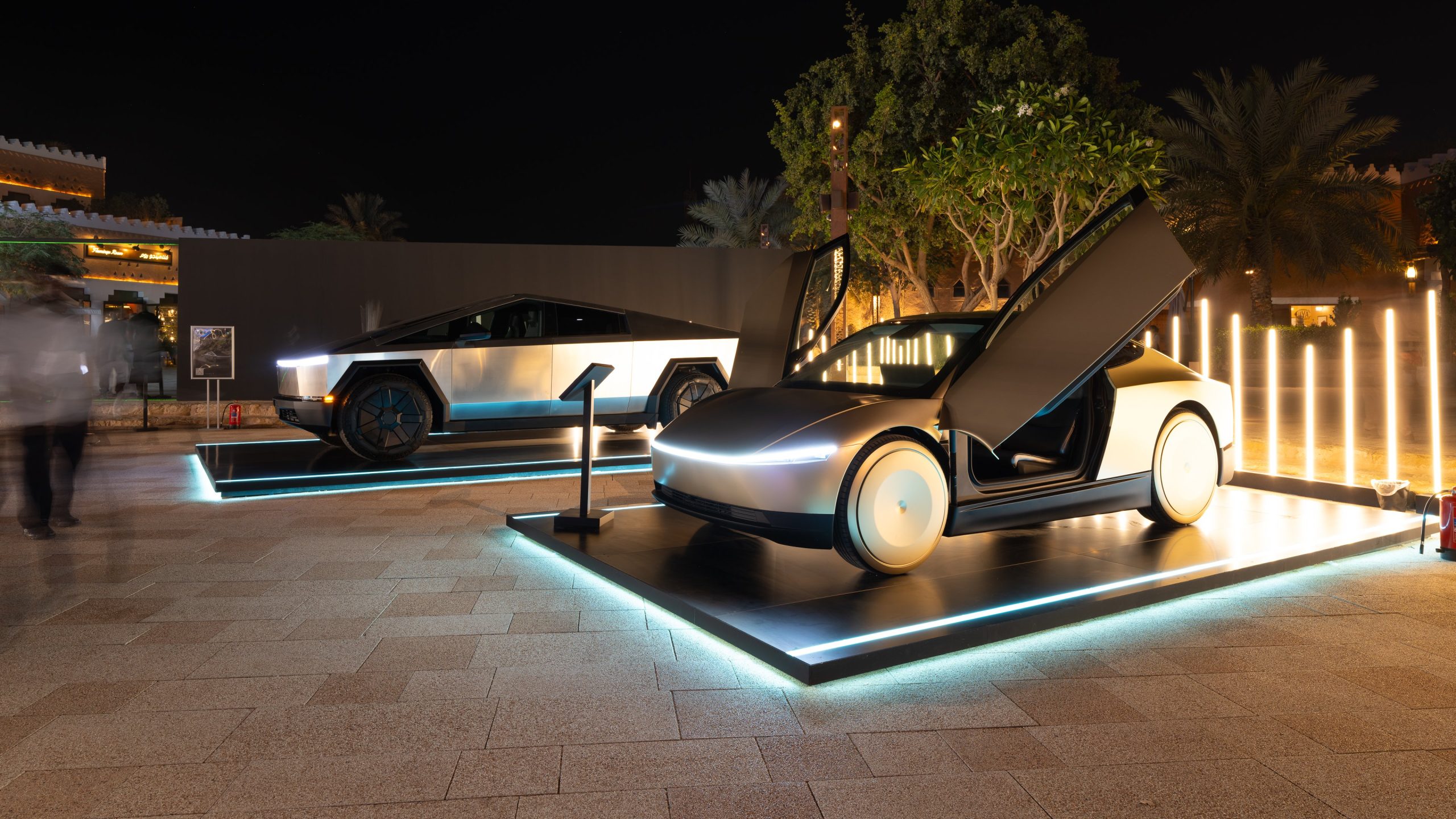

Investor's Corner
Tesla Q4 Earnings Summary, Sees Profitability in 2016
Tesla had plenty of good news to announce in its Q4 earnings call today. First and foremost, the company experienced a $179 million positive core operational cash flow in Q4 and $44 million for the year. Despite a $1.5 billion investment into the Gigafactory, Tesla’s 2016 outlook sees the company generating positive net cash flow and achieve non-GAAP profitability for the full year.
Model S
Demand for the Model S remains strong despite record low gasoline prices. Tesla says its customers are more focused on superior performance, technology, safety, lower environmental impact, and style than they are on saving money on fuel costs.
After being jabbed quite hard by Consumer Reports over reliability issues last year, Tesla reports its repair experience for cars built in 2015 was half what it was the prior year and one quarter what it was for cars manufactured in 2012.
Market share of Model S continues to expand into global markets. The company saw a 76% increase in global deliveries in Q4, making it the number one selling luxury sedan in the U.S, outselling comparably priced four-door sedans from Mercedes, BMW, Audi, Jaguar, and Porsche.
“Even on our competitors’ home turf and in countries without government incentives to purchase electric vehicles, Model S is winning. For example, in Switzerland, Model S outsold the Mercedes Benz S-Class, the BMW 7- Series, the Porsche Panamera and the Audi A-8 combined for the full year, and also outsold the Mercedes Benz E-Class. In Germany in Q4, Model S outsold the Porsche Panamera. Finally, across all of Europe last year Model S outsold the Audi A8 and A7 combined and the BMW 7-Series and 6-Series combined.” Tesla Q4 Shareholder letter
Model S took share from all incumbent manufacturers to become the #1 selling
comparably priced four-door sedan pic.twitter.com/IIa7wKHPrj— TESLARATI (@Teslarati) February 10, 2016
Model X
Model X reservations grew by 75% compared to 2015. After deliberately limiting Model X production in the fourth quarter to address quality control issues, the company says it plans to increase production of the Model X to approximately 1,000 units a week in Q2. Tesla began rolling out a test drive program for reservation holders recently and expects the Model X to start hitting the showroom floors this quarter.
Tesla Energy
Tesla Energy news is strongly positive as well. Production has been transferred to the Gigafactory, where manufacture for Powerwall and Powerpack is now up and running. The first residential and commercial installations in the US, Germany, and Australia have been completed.
The energy storage side of the business is already experiencing positive gross margins. The company believes its energy storage customers will become valuable potential new car purchasers as well.
Growth and Production
Tesla anticipates another year with 60 to 80% sales growth, and expects to deliver between 80,000 and 90,000 new cars in 2016. It foresees gross margins approaching 30% and a positive net cash flow from the second quarter onward.
Model 3
Following confirmation by the company that the Model 3 will sell for $35,000, Tesla has set a March 31 date for when it will release more information about the vehicle. It says the car is “on schedule” and the production will begin in late 2017.
We will update you further at the end of the press conference and conference call with analysts later today.
Tesla shares were up 14 percent in after-hours trading after closing at $143.67.

Investor's Corner
SpaceX IPO is coming, CEO Elon Musk confirms
However, it appears Musk is ready for SpaceX to go public, as Ars Technica Senior Space Editor Eric Berger wrote an op-ed that indicated he thought SpaceX would go public soon. Musk replied, basically confirming it.

Elon Musk confirmed through a post on X that a SpaceX initial public offering (IPO) is on the way after hinting at it several times earlier this year.
It also comes one day after Bloomberg reported that SpaceX was aiming for a valuation of $1.5 trillion, adding that it wanted to raise $30 billion.
Musk has been transparent for most of the year that he wanted to try to figure out a way to get Tesla shareholders to invest in SpaceX, giving them access to the stock.
He has also recognized the issues of having a public stock, like litigation exposure, quarterly reporting pressures, and other inconveniences.
However, it appears Musk is ready for SpaceX to go public, as Ars Technica Senior Space Editor Eric Berger wrote an op-ed that indicated he thought SpaceX would go public soon.
Musk replied, basically confirming it:
As usual, Eric is accurate
— Elon Musk (@elonmusk) December 10, 2025
Berger believes the IPO would help support the need for $30 billion or more in capital needed to fund AI integration projects, such as space-based data centers and lunar satellite factories. Musk confirmed recently that SpaceX “will be doing” data centers in orbit.
AI appears to be a “key part” of SpaceX getting to Musk, Berger also wrote. When writing about whether or not Optimus is a viable project and product for the company, he says that none of that matters. Musk thinks it is, and that’s all that matters.
It seems like Musk has certainly mulled something this big for a very long time, and the idea of taking SpaceX public is not just likely; it is necessary for the company to get to Mars.
The details of when SpaceX will finally hit that public status are not known. Many of the reports that came out over the past few days indicate it would happen in 2026, so sooner rather than later.
But there are a lot of things on Musk’s plate early next year, especially with Cybercab production, the potential launch of Unsupervised Full Self-Driving, and the Roadster unveiling, all planned for Q1.
Investor's Corner
Tesla Full Self-Driving statistic impresses Wall Street firm: ‘Very close to unsupervised’
The data shows there was a significant jump in miles traveled between interventions as Tesla transitioned drivers to v14.1 back in October. The FSD Community Tracker saw a jump from 441 miles to over 9,200 miles, the most significant improvement in four years.

Tesla Full Self-Driving performance and statistics continue to impress everyone, from retail investors to Wall Street firms. However, one analyst believes Tesla’s driving suite is “very close” to achieving unsupervised self-driving.
On Tuesday, Piper Sandler analyst Alexander Potter said that Tesla’s recent launch of Full Self-Driving version 14 increased the number of miles traveled between interventions by a drastic margin, based on data compiled by a Full Self-Driving Community Tracker.
🚨 Piper Sandler reiterated its Overweight rating and $500 PT on Tesla $TSLA stock
Analyst Alexander Potter said FSD is near full autonomy and latest versions showed the largest improvement in disengagements, from 440 miles to 9,200 miles between critical interventions pic.twitter.com/u4WCLfZcA9
— TESLARATI (@Teslarati) December 9, 2025
The data shows there was a significant jump in miles traveled between interventions as Tesla transitioned drivers to v14.1 back in October. The FSD Community Tracker saw a jump from 441 miles to over 9,200 miles, the most significant improvement in four years.
Interestingly, there was a slight dip in the miles traveled between interventions with the release of v14.2. Piper Sandler said investor interest in FSD has increased.
Full Self-Driving has displayed several improvements with v14, including the introduction of Arrival Options that allow specific parking situations to be chosen by the driver prior to arriving at the destination. Owners can choose from Street Parking, Parking Garages, Parking Lots, Chargers, and Driveways.
Additionally, the overall improvements in performance from v13 have been evident through smoother operation, fewer mistakes during routine operation, and a more refined decision-making process.
Early versions of v14 exhibited stuttering and brake stabbing, but Tesla did a great job of confronting the issue and eliminating it altogether with the release of v14.2.
Tesla CEO Elon Musk also recently stated that the current v14.2 FSD suite is also less restrictive with drivers looking at their phones, which has caused some controversy within the community.
Although we tested it and found there were fewer nudges by the driver monitoring system to push eyes back to the road, we still would not recommend it due to laws and regulations.
Tesla Full Self-Driving v14.2.1 texting and driving: we tested it
With that being said, FSD is improving significantly with each larger rollout, and Musk believes the final piece of the puzzle will be unveiled with FSD v14.3, which could come later this year or early in 2026.
Piper Sandler reaffirmed its $500 price target on Tesla shares, as well as its ‘Overweight’ rating.
Investor's Corner
Tesla gets price target boost, but it’s not all sunshine and rainbows

Tesla received a price target boost from Morgan Stanley, according to a new note on Monday morning, but there is some considerable caution also being communicated over the next year or so.
Morgan Stanley analyst Andrew Percoco took over Tesla coverage for the firm from longtime bull Adam Jonas, who appears to be focusing on embodied AI stocks and no longer automotive.
Percoco took over and immediately adjusted the price target for Tesla from $410 to $425, and changed its rating on shares from ‘Overweight’ to ‘Equal Weight.’
Percoco said he believes Tesla is the leading company in terms of electric vehicles, manufacturing, renewable energy, and real-world AI, so it deserves a premium valuation. However, he admits the high expectations for the company could provide for a “choppy trading environment” for the next year.
He wrote:
“However, high expectations on the latter have brought the stock closer to fair valuation. While it is well understood that Tesla is more than an auto manufacturer, we expect a choppy trading environment for the TSLA shares over the next 12 months, as we see downside to estimates, while the catalysts for its non-auto businesses appear priced at current levels.”
Percoco also added that if market cap hurdles are achieved, Morgan Stanley would reduce its price target by 7 percent.
Perhaps the biggest change with Percoco taking over the analysis for Jonas is how he will determine the value of each individual project. For example, he believes Optimus is worth about $60 per share of equity value.
He went on to describe the potential value of Full Self-Driving, highlighting its importance to the Tesla valuation:
“Full Self Driving (FSD) is the crown jewel of Tesla’s auto business; we believe that its leading-edge personal autonomous driving offering is a real game changer, and will remain a significant competitive advantage over its EV and non-EV peers. As Tesla continues to improve its platform with increased levels of autonomy (i.e., hands-off, eyes-off), it will revolutionize the personal driving experience. It remains to be seen if others will be able to keep pace.”
Additionally, Percoco outlined both bear and bull cases for the stock. He believes $860 per share, “which could be in play in the next 12 months if Tesla manages through the EV-downturn,” while also scaling Robotaxi, executing on unsupervised FSD, and scaling Optimus, is in play for the bull case.
Will Tesla thrive without the EV tax credit? Five reasons why they might
Meanwhile, the bear case is placed at $145 per share, and “assumes greater competition and margin pressure across all business lines, embedding zero value for humanoids, slowing the growth curve for Tesla’s robotaxi fleet to reflect regulatory challenges in scaling a vision-only perception stack, and lowering market share and margin profile for the autos and energy businesses.”
Currently, Tesla shares are trading at around $441.








